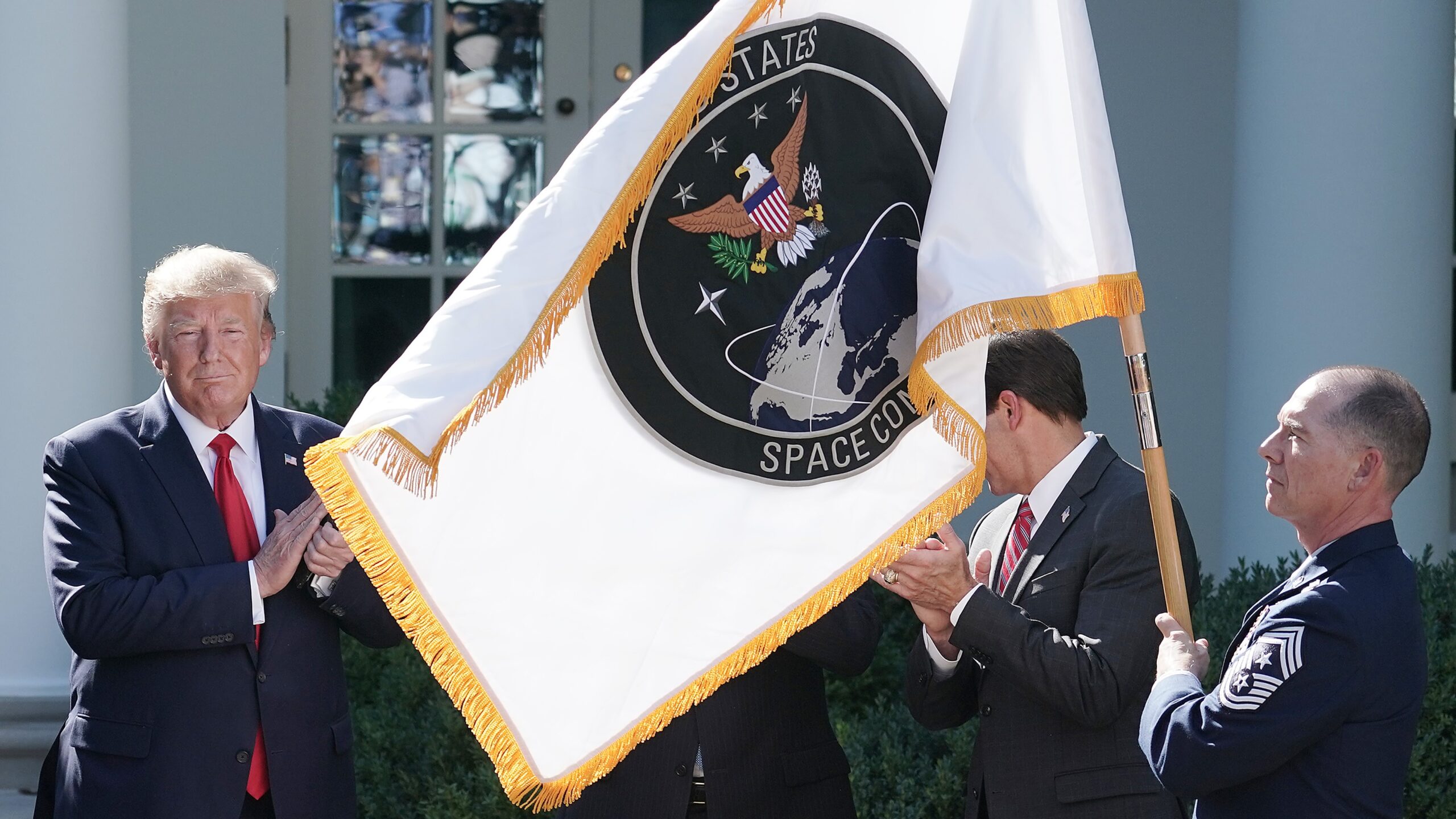
Then-President Donald Trump (L) applauds as the flag for the new the U.S. Space Command is revealed in the Rose Garden at the White House August 29, 2019 in Washington, DC. (Photo by Chip Somodevilla/Getty Images)
WASHINGTON: A draft environmental impact review of the options for a new home for Space Command has given all six locations the okay, concluding that the necessary construction would cause no significant damage to the local ecosystem and populace at any of the sites, the Air Force announced today.
The review was legally required under the National Environmental Policy Act (NEPA), which also requires that the Air Force open a 30-day public comment period. The finding of “no significant impact” frees the Department of the Air Force to choose any one of the six locations determined by its own internal basing review — Redstone Arsenal in Huntsville, Ala.; Kirtland AFB in Albuquerque, N.M.; Offutt AFB in Bellevue, Neb.; Peterson SFB in Colorado Springs, Colo.; and Space Coast Space Port in Brevard County, Fla. — as SPACECOM’s permanent home.
Thus the next, and deciding, step in the controversial basing process will be the decision by Air Force Secretary Frank Kendall on which proposed site will allow SPACECOM the speediest path to “full operational capability (FOC).” That issue in an of itself is fraught with political peril, as the original process for vetting candidate locations put forward by state governments did not include that criteria.
Then-President Donald Trump tapped Huntsville, Ala., for SPACECOM’s new home on Jan. 11, 2021, despite a briefing by senior Defense Department officials that put Colorado Springs — SPACECOM’s current temporary HQ — in first place as the “preferred” choice, and Huntsville as the best alternative.
The decision led to cries of political foul play by Colorado legislators, and the initiation of two oversight reviews: one by the Pentagon’s Office of the Inspector General (OIG) and one by the Government Accountability Office. Both found Trump’s decision to be justified but that there were inconsistencies and irregularities in the overarching Air Force process.
A draft of the OIG report, obtained by Breaking Defense and which included material redacted in the final version released to the public, explained that the Air Force’s choice of Colorado Springs was made only in the days running up to the day set a White House decision-making meeting on the recommendation of top brass responsible for space activities.
SPACECOM head Gen. Jim Dickinson and Space Force chief Gen. Jay Raymond argued that moving the headquarters of the operational command would cause disruptions that would delay its full functioning, at a time when speed of action is needed due to increasing threats from China and Russia.
However, the OIG and GAO found, the military leaders didn’t provide any metrics or data to back up that assertion. The OIG recommended that the Office of the Secretary of Defense (OSD) consider whether “time to FOC” should be a criterion in future basing decisions. OSD concurred and Secretary of Defense Lloyd Austin tasked Kendall to make such an assessment for the SPACECOM basing call.
While Kendall has not spoken as to when his decision will be made, it would be logical to assume that he would act in time to inform the fiscal 2024 budget request — especially since according to the draft environmental assessment (EA) SPACECOM had been hoping to break ground for a new facility in 2025, followed by two years of construction.
HASC chair backs Air Force plan on space Guard units (Exclusive)
House Armed Services Chairman Mike Rogers tells Breaking Defense that Guard advocates should not “waste their time” lobbying against the move.



























